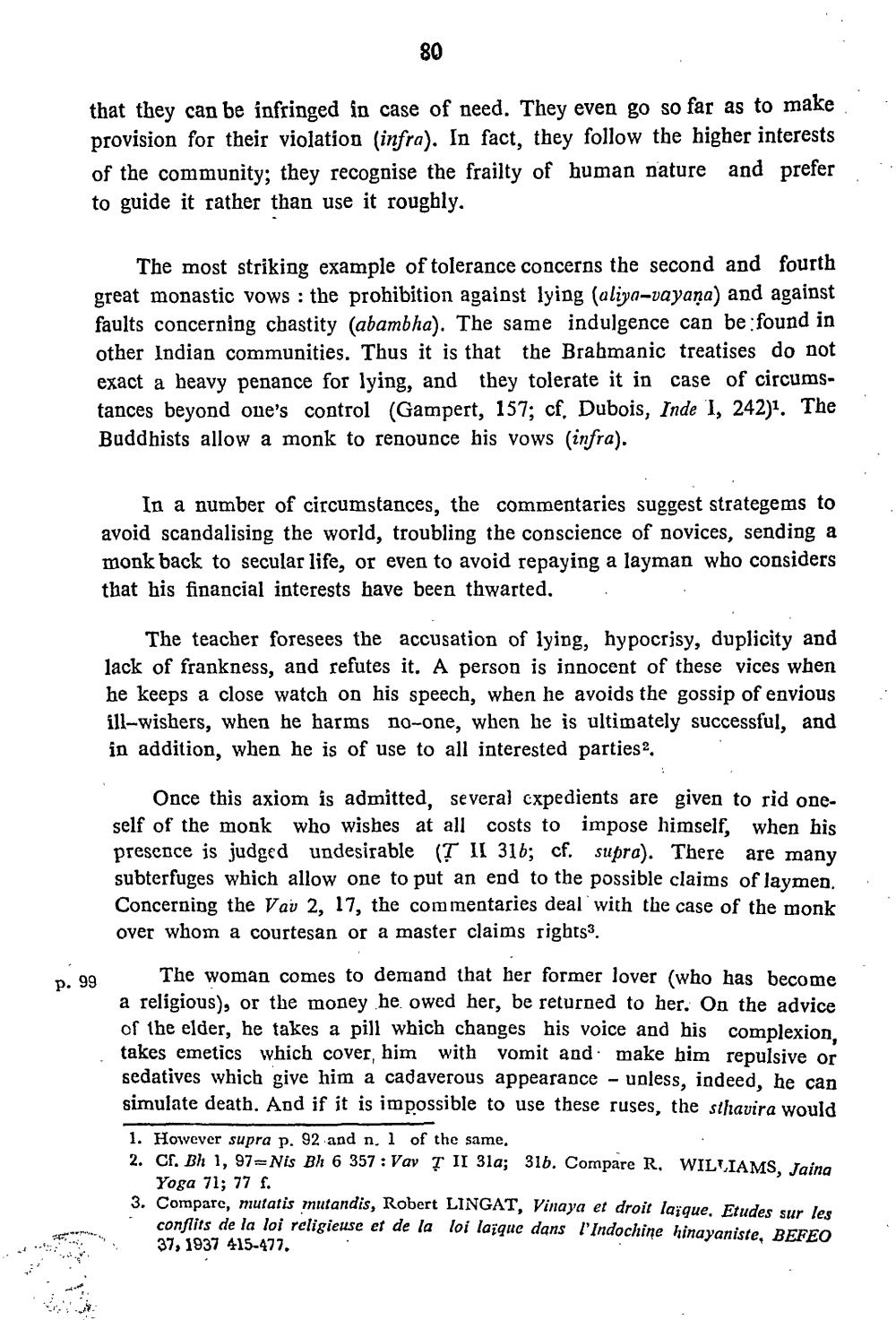________________
:
that they can be infringed in case of need. They even go so far as to make provision for their violation (infra). In fact, they follow the higher interests of the community; they recognise the frailty of human nature and prefer to guide it rather than use it roughly.
The most striking example of tolerance concerns the second and fourth great monastic vows : the prohibition against lying (aliya-vayaņa) and against faults concerning chastity (abambha). The same indulgence can be found in other Indian communities. Thus it is that the Brahmanic treatises do not exact a heavy penance for lying, and they tolerate it in case of circumstances beyond one's control (Gampert, 157; cf. Dubois, Inde 1, 242)1. The Buddhists allow a monk to renounce his vows (infra).
In a number of circumstances, the commentaries suggest strategems to avoid scandalising the world, troubling the conscience of novices, sending a monk back to secular life, or even to avoid repaying a layman who considers that his financial interests have been thwarted.
The teacher foresees the accusation of lying, hypocrisy, duplicity and lack of frankness, and refutes it. A person is innocent of these vices when he keeps a close watch on his speech, when he avoids the gossip of envious ill-wishers, when he harms no-one, when he is ultimately successful, and in addition, when he is of use to all interested parties 2.
Once this axiom is admitted, several cxpedients are given to rid oneself of the monk who wishes at all costs to impose himself, when his presence is judged undesirable (T II 316; cf. supra). There are many subterfuges which allow one to put an end to the possible claims of laymen, Concerning the Vav 2, 17, the commentaries deal with the case of the monk over whom a courtesan or a master claims rights3.
p. 99
The woman comes to demand that her former lover (who has become a religious), or the money he owed her, be returned to her. On the advice of the elder, he takes a pill which changes his voice and his complexion. takes emetics which cover, him with vomit and make him repulsive or sedatives which give him a cadaverous appearance - unless, indeed, he can simulate death. And if it is impossible to use these ruses, the sthavira would
1. However supra p. 92 and n, 1 of the same. 2. Cr. Bh 1, 97=Nis Bh 6 357 : Vav T II 31a; 31b. Compare R. WILLIAMS, Jaina
Yoga 71; 77 f. 3. Comparc, mutatis mutandis, Robert LINGAT, Vinaya et droit laïque. Etudes sur les
conflits de la loi religieuse et de la loi laïque dans l'Indochine hinayaniste, BEFEO 37, 1937 415-477.
....




